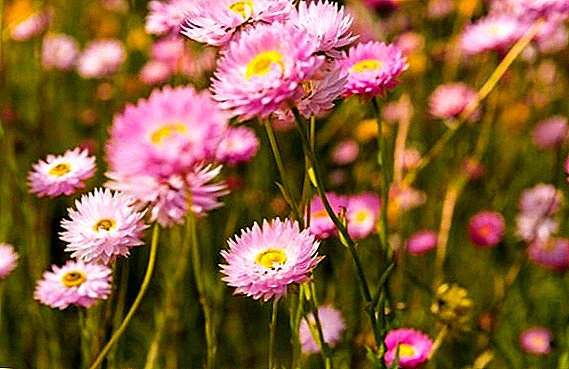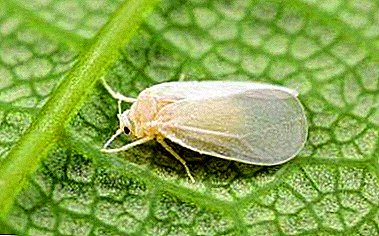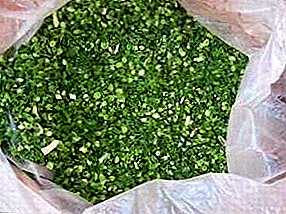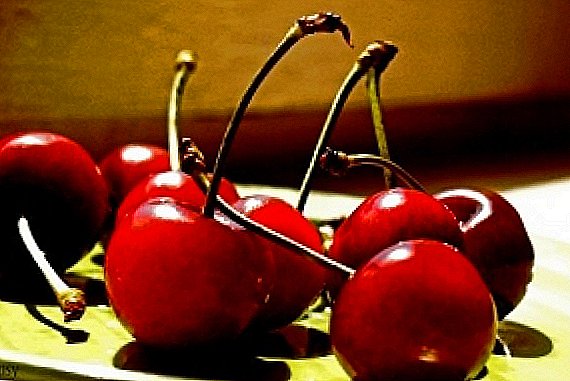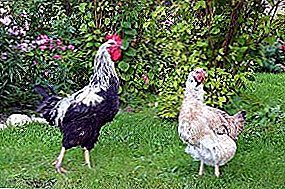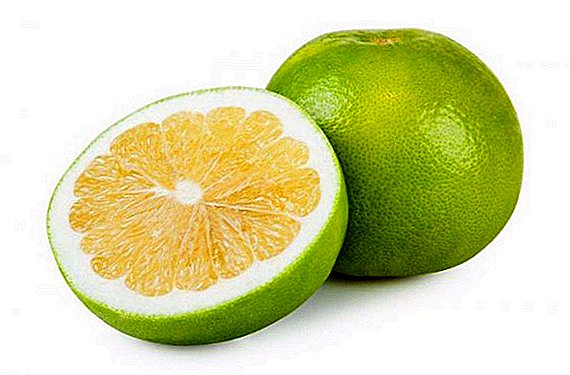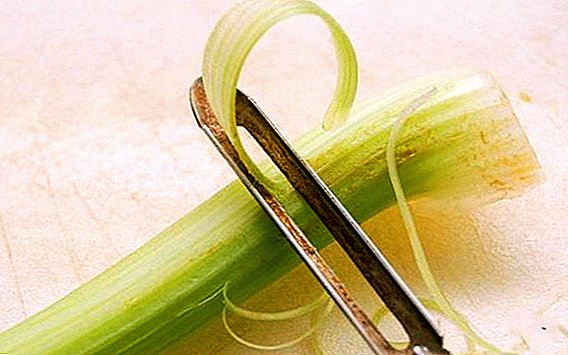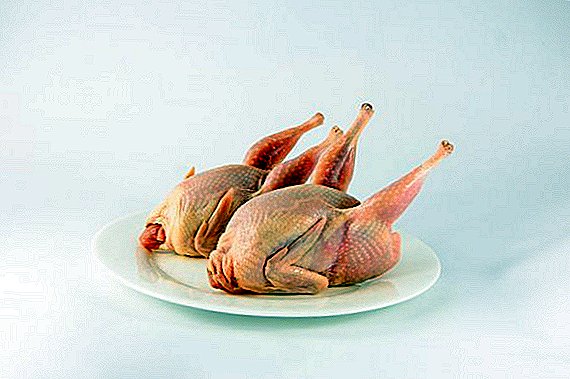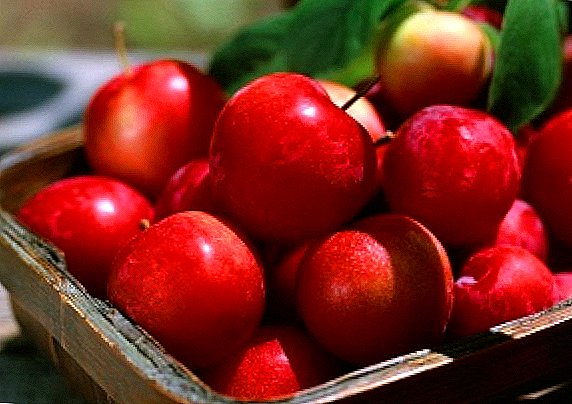
The apple fragrant, liquid, grown independently, always pleases the heart of a true gardener.
Especially it is expensive where the climate can throw up an unpleasant surprise, but the skill of a man who cultivates his garden with love and the right selection of varieties is able to overcome everything.
The climate in the Leningrad region is cool.
Therefore, Russian breeders brought out frost-resistant varieties of apple varieties, which are characterized by rapid ripening of apples, and they are endowed with such properties as self-defense from pests and diseases.
The best and tasty varieties of apples
Description of varieties
The best varieties which grow well in the harsh climatic conditions of the Leningrad region, are considered:
Antey - winter Belarusian variety. Apple trees grow medium size, rare crown with a pyramidal shape. The Antey variety belongs to the fast spicing variety, gives stable and high yields, and tolerates the winter well. Ripe apples are large conical in shape, their peel is yellow-green with a dark red color almost throughout the apple. The shelf life of the fruit is 6 months. The variety is resistant to various diseases.
Apple variety Aelita sows in early fall. The weight of an apple is 130 grams, the color is yellow with a bright red color. Apples are juicy, aromatic, taste sweet and sour. It is already possible to collect from September, the shelf life is small, about two months. The first time they begin to sing the fruits already from 4-5 years after planting the seedlings. Main characteristics - It is winter hardiness, high yields, commodity and taste at height.

Auksis - this variety is bred by Lithuanian breeders. The density of the crown of the tree is average, and the shape is round. Apples are light yellow medium size. The flesh of the fruit is yellow, juicy, it tastes sour-sweet and very fragrant. They start singing in September and last until January. Fruiting begin with 4 years. The Auxis apple variety is a skoroplodny variety, resistant to frost and to such a disease as scab, brings high yields.
Winter variety "Friendship" It is characterized by large round-shaped fruits, slightly ribbed, the peel is greenish-yellow, taste sweet and sour. The flesh of the apples is dense and green-white. Harvesting begins in late September, and the fruit is stored until spring. It is fruitful, resistant to cold weather scab resistant.
Tree varieties "Star" grows medium size, with a wide pyramidal crown of a tree. The flesh of apples is sweet and sour, juicy. The shape of the fruit is round, they are yellow, not very large. They begin to sing in September, retain their appearance until March. Easily tolerate harsh winters, medium yields.
Autumn variety "Chosen One" pleases us with large fruits, the weight of one apple is about 280 grams. They have a green-yellow peel, slightly ribbed, the crown of trees is rare, sprawling. Inside, the apple is white, tender, sweet-sour. Begin to ripen with the arrival of autumn, but have a small shelf life, until November. "Chosen One" gives good yields, differs from other varieties by excellent commercial qualities and resistance to scab, harsh winters do not suit.
Variety "Rennet Chernenko" characterized by a strong-growing tree, with a wide pyramidal crown. The weight of one apple is 125 grams, the peel is greenish-yellow. Juicy, dense pulp. Apples begin to sing in early October, I have a long shelf life almost until April, for the first time fruit for 6-7 years. Harvests are harvested every year, "Rennet Chernenko" skoroplodny and winter-hardy.

Estonian winter variety Tellisaare pleases us with fruits with pale yellow flesh, dense, sweet-sour to taste, the rind of apples is golden-yellow. The weight of one apple is 80 grams. They begin to sing at the end of September, have a long shelf life almost until May.
American variety is considered a great table variety. "Welsey". The tree has a round thick crown. The weight of one ripe apple is about 110 grams, medium size. Fruits are smooth, green, fragrant, excellent sweet-sour taste. The apple tree begins to sing in September, and the picked fruits are well preserved until spring arrives. Variety resistant to scab and slight frost. The first time begins to bear fruit from the second year.
Fruit
Fruits of apples are usually large, the weight of one apple can reach almost 280 grams (variety "Chosen One"). The color of the skin varies depending on the variety, greenish yellow, green, pale yellow. The flesh is usually dense, the apples are very fragrant, the taste is sweet and sour.
It is also interesting to read about autumn apple varieties.
Tree
Apple trees are distinguished by a dense crown of a wide pyramidal shape, vigorous trees, almost all varieties are resistant to severe frosts and cold. Some varieties give yields in the second year after planting.
Virtues
- Resistance to such disease as scab.
-Long-term storage of fruits after breaking them from a tree.
-Good transportability.
- Practically all varieties are winter-hardy.
- High stable yields.
-Quick ripening apples.
disadvantages

-Some varieties come into fruition from 6 years after planting.
-Little shelf life of fruit in the variety "Chosen."
- Practically all varieties of apples begin to sing with the arrival of autumn.
Peculiarities of care
Caring for apples that grow in the Leningrad region includes cleaning dry leaves, apples lying on the ground, whitening tree trunks and digging the soil, as well as preventive measures to combat diseases and pests. To protect apple trees from sunburn and sudden fluctuations in the period from autumn to spring, they are whitewashed or tied with spruce branches, raspberry or sunflower branches. Young trees are covered.
Pruning
Many gardeners are concerned about the question, is it really important and necessary to prune fruit trees?
Pluses advantages:
-Apples grow large and juicy.
- For pruned trees, it is easier to care for and more convenient to harvest.
-On young branches grows more apples than on perennial branches, if they are not removed in time, the yield begins to fall
Pruning young apple trees is best done every year, in autumn and spring. In the spring, remove the branches that had been frozen out over the winter, and, of course, to increase the yield of apples and form the correct tree crown.
Spring pruning Trees are best done before the appearance of buds, and the beginning of the juice flow. In the autumn period, rotten branches are cut, broken and those damaged by pests. It should begin after the leaves fall, it is very necessary to have time before the first frost.
Each year, young apple trees cut off individual shoots and remove thin branches. Pruning done constantly and in moderation. After all, if you overdo it, the risk of damage to trees increases. But if you cut the branches rarely and impermanently - a weak and thickened tree will grow.
Thanks to pruning branches and shoots Apple trees form the correct crown. The most popular and easy in the formation of the crown is a longline - sparse form, which consists of 5-6 branches and trunk. Its height is about 50 cm. First of all, the crown is formed, it is necessary to leave 3 branches. In the second year, form 2 more branches.

When the apple tree begins to delight us with constant excellent yields of about 6–7 years, gardeners prune the central guide (it is located higher from the location of the skeletal branch). To create the strength and endurance of the crown it is necessary to make the subordination of branches of the second and third order.
The basic rule when pruning branches is what is needed to be the same number of old branches and young shoots, i.e. to keep a balance between them. That, in turn, gives a guarantee for a high yield.
Fertilizers
The amount of fertilizer that is applied to the soil depends on its condition and fertility. Compost, humus - These are organic fertilizers that must be applied in the fall, when digging up the soil. In the spring, organic fertilizer mulch the earth. This is a great way to preserve soil moisture, the growth of grass and weeds slows down, and the useful and nutrients, after rainy days, are washed out, thus, liquid subcortex is irrelevant.
Watering
Apple seedlings, after planting must be watered, at the rate of 2-3 buckets of water. When dry summer add another watering, but it is necessary to water in moderation. In the Leningrad region, watering after planting will be enough, since the climate is there with high humidity. After fully absorbing water into the ground, the hole around the tree must be mulched. Excess moisture adversely affects the maturation of wood.
Winter
Frosts in winter are dangerous for apple trees, including they have a detrimental effect on the root system and the lower part of the trunk. To avoid the influence of frost, it is recommended to cover the hole around the tree with mulch materials. Peat is perfect for this, and mice do not like it and rodents do not live there.

Apple trees before wintering need to pour enough water. After all, it has long been known that frost is perfectly tolerated by those trees that have enough moisture in summer. But everything should be in moderation, it is necessary to take into account the climate in the Leningrad region, and it is already slightly wet. Gardeners recommend planting mustard or phacelia under the trees, they take some of the excess moisture on themselves.
Apple trees are sheltered to protect the roots from frost, but this is far from the case. First of all, apple trees must be sheltered to protect them from mice, rabbits and other rodents who eat the young bark of trees. Also wrapping apple trees contributes to protection from cold frost winds, which dry the bark, and from excessive sunlight, they can cause burns of the bark.
It can be concluded that the shelter of apples for the winter is one of the main activities that need to be done every fall, before the onset of cold weather. Prepare the apple orchard for the onset of winter cold should be in advance.
Landing features
The soil in the Leningrad region is very poor in nutrients. Loam prevails in this region, the fertile soil layer is equal to 15-20 centimeters, and in the northern regions there are sands with gravel, or peatlands. The latter are better than sands, since the soil in the peatlands is acidic, and its layer is rather deep.
Before landing Apple Garden land cleared of perennial weeds. Together with the digging of the earth, fertilizers are applied, better, of course, organic fertilizer, this is compost, which contains organic matter, or rotted manure. Also, mineral fertilizers are added to enrich the soil with nutrients and improve its quality. These are superphosphates, nitrogen and potash fertilizers.
You can not shorten the roots of seedlings immediately before planting, because they are able to provide the trees with the most essential nutrients. Only broken and frozen roots will be removed.
Seedlings, which were dried up mute, are soaked in water for two days, the wrinkled bark is leveled, then they are thrust by liquid clay.
Since the soil in the Leningrad Region is loam, i.e. it is poor, a planting pit is dug up to 60 cm by 80 cm in size, in order to feed the root system. Layers of the pit, the upper and lower, put in different directions, and then in the landing pit, first fall asleep the lower layer, and then the top. The bottom of the pit is covered with humus or peat, wood ash and superphosphates are added. A wooden peg is driven into the center of the pit.
The apple tree is lowered to the desired depth, we straighten the roots gently, then fall asleep with soil mixed with humus. For dense filling of a hole the filled-up earth is stamped. Planted trees are tied to a peg, and watered, about 4 buckets of water per tree. The next step is to mulch the soil with manure, peat, straw before the beginning of the root collar.
Landing dates
The varieties of apple trees that grow in the Leningrad region are best planted during dormancy in the fall, before the onset of severe frosts, or in the spring, and you need to have time before budding. But still, optimal time consider November-December.
We are speaking in this article about completely different varieties of apple trees, with different tastes and ripening terms. Seeing such diversity, anyone can choose the one that best suits their preferences and needs. Undoubtedly, every gardener has his own summer secrets, earned by sweat and calluses. And we hope that our article will be a small, but a contribution to this piggy bank of knowledge and experience. Good luck to you gardener friends!


